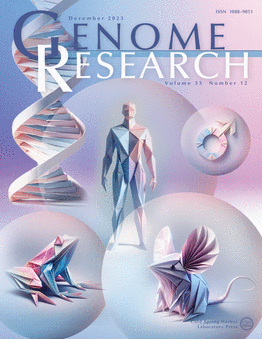A new compression strategy to reduce the size of nanopore sequencing data
IF 6.2
2区 生物学
Q1 BIOCHEMISTRY & MOLECULAR BIOLOGY
引用次数: 0
Abstract
Nanopore sequencing is an increasingly central tool for genomics. Despite rapid advances in the field, large data volumes and computational bottlenecks continue to pose major challenges. Here we introduce ex-zd, a new data compression strategy that helps address the large size of raw signal data generated during nanopore experiments. Ex-zd encompasses both a lossless compression method, which modestly outperforms all current methods for nanopore signal data compression, and a 'lossy' method, which can be used to achieve dramatic additional savings. The latter component works by reducing the number of bits used to encode signal data. We show that the three least significant bits in signal data generated on instruments from Oxford Nanopore Technologies (ONT) predominantly encode noise. Their removal reduces file sizes by half without impacting downstream analyses, including basecalling and detection of modified DNA or RNA bases. Ex-zd compression saves hundreds of gigabytes on a single ONT sequencing experiment, thereby increasing the scalability, portability, and accessibility of nanopore sequencing.一种新的压缩策略,以减少纳米孔测序数据的大小
纳米孔测序是基因组学日益重要的工具。尽管该领域发展迅速,但大数据量和计算瓶颈仍然构成重大挑战。在这里,我们介绍了ex-zd,一种新的数据压缩策略,有助于解决纳米孔实验过程中产生的大量原始信号数据。Ex-zd包含了一种无损压缩方法,其性能略优于当前所有纳米孔信号数据压缩方法,以及一种“有损”方法,可用于实现显著的额外节省。后一个组件的工作原理是减少用于编码信号数据的比特数。我们表明,在牛津纳米孔技术(ONT)的仪器上产生的信号数据中,三个最低有效位主要编码噪声。它们的移除将文件大小减少了一半,而不会影响下游分析,包括碱基调用和检测修饰的DNA或RNA碱基。Ex-zd压缩在单个ONT测序实验上节省了数百gb,从而增加了纳米孔测序的可扩展性,可移植性和可访问性。
本文章由计算机程序翻译,如有差异,请以英文原文为准。
求助全文
约1分钟内获得全文
求助全文
来源期刊

Genome research
生物-生化与分子生物学
CiteScore
12.40
自引率
1.40%
发文量
140
审稿时长
6 months
期刊介绍:
Launched in 1995, Genome Research is an international, continuously published, peer-reviewed journal that focuses on research that provides novel insights into the genome biology of all organisms, including advances in genomic medicine.
Among the topics considered by the journal are genome structure and function, comparative genomics, molecular evolution, genome-scale quantitative and population genetics, proteomics, epigenomics, and systems biology. The journal also features exciting gene discoveries and reports of cutting-edge computational biology and high-throughput methodologies.
New data in these areas are published as research papers, or methods and resource reports that provide novel information on technologies or tools that will be of interest to a broad readership. Complete data sets are presented electronically on the journal''s web site where appropriate. The journal also provides Reviews, Perspectives, and Insight/Outlook articles, which present commentary on the latest advances published both here and elsewhere, placing such progress in its broader biological context.
 求助内容:
求助内容: 应助结果提醒方式:
应助结果提醒方式:


